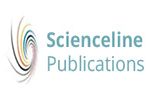(2020) Sequencing of bcfC Gene of Salmonella Typhimurium Isolated from Ducks in Egypt. World's Veterinary Journal. pp. 380-390. ISSN 23224568 (ISSN)
|
Text
WVJ 10(3) 380-390, Sep 25, 2020.pdf - Published Version Download (916kB) |
Abstract
The main objective of this study was to applying bcfC gene sequence of Salmonella Typhimurium recently isolated from ducks to give insight into the source and origin, molecular epidemiology, disease pattern of Salmonella Typhimurium in Egyptian duck farms. Out of 75 fecal swab samples, 15 (20%) local field isolates were detected and confirmed phenotypically by culturing, gram staining, biochemically and serologically to be Salmonella Typhimurium. The PCR amplification with bcfC gene-specific primers was conducted with genomic DNA, which revealed a product with the approximate size of 467 bp. TheBcfC gene was found in 7 (46.6%) isolates of Salmonella Typhimurium. Phylogenetic and partial gene sequence analysis of bcfC gene of Salmonella Typhimurium showed clear clustering of Egyptian isolates of Salmonella Typhimurium and different Salmonella strains uploaded from GenBank. Sequence identities between the isolated Egyptian strain and different Salmonella Typhimurium strains from GenBank revealed 99.8-100% homology. Open reading frame (ORF) analysis of Salmonella typhimurium bcfC gene using NCBI tool and ORF analysis of bcfC gene protein translation using ExPasy (SIB Bioinformatics Resource Portal) indicated all open reading frames of a specified minimum size in a sequence of (453 bp). The 3 conserved domains region in the nucleotide sequence were PapC N-terminal domain (107-394bp), PRK15193 outer membrane usher protein (56-424bp), and FimD Outer membrane usher protein FimD/PapC (cell motility, extracellular structures, 56-424bp). The PapC N-terminal domain was a structural domain found at the N-terminus of S. typhimurium PapC protein and had a central role in the pili assembly chaperone usher system (CUP). Amino acids alignment report of the sequenced 415 amino acid of Salmonella Typhimurium bcfC gene showed great homology between the Egyptian Salmonella Typhimurium strain and the different Salmonella strains uploaded from GenBank. Nucleotide alignment report of the sequenced Salmonella Typhimurium bcfC gene at (417bp) demonstrated great homology between the Egyptian Salmonella Typhimurium strain and the different Salmonella strains uploaded from GenBank. In conclusion, the Egyptian Salmonella Typhimurium isolate was related to the common sequence types isolated from humans and bovine-based products across the world especially in the United Kingdom, USA, Ireland, and México. Most of the duck farms from which we isolated the Egyptian Salmonella Typhimurium isolates were located in the same geographical area of cattle farms in addition to the duck farms lacked the requirements of biosecurity, which could facilitate the circulatory transmission of salmonella strains between the human beings and other animal farms, including duck farms. Moreover, the PapC N-terminal domain was a central conserved domain encoded by bcfC gene of S. Typhimurium. A PapC N-terminal conserved domain can be used as a vaccine target for vaccine production against S. Typhimurium.
| Item Type: | Article |
|---|---|
| Keywords: | bcfC gene, Conserved domain, Duck, GenBank, ORF, Phylogenetic tree, Salmonella Typhimurium, Sequencing. |
| Subjects: | Q Science > Q Science (General) S Agriculture > SF Animal culture |
| Divisions: | World's Veterinary Journal (WVJ) |
| Page Range: | pp. 380-390 |
| Journal or Publication Title: | World's Veterinary Journal |
| Journal Index: | Scopus |
| Volume: | 10 |
| Number: | 3 |
| Publisher: | Scienceline Publication, Ltd |
| Identification Number: | https://doi.org/10.36380/scil.2020.wvj47 |
| ISSN: | 23224568 (ISSN) |
| Depositing User: | Dr. Alireza Sadeghi |
| URI: | http://eprints.science-line.com/id/eprint/419 |
Actions (login required)
 |
View Item |

